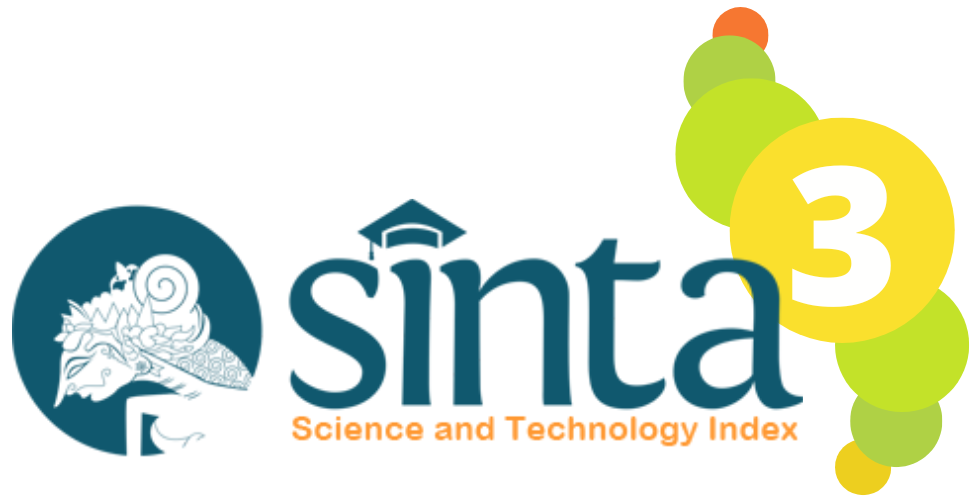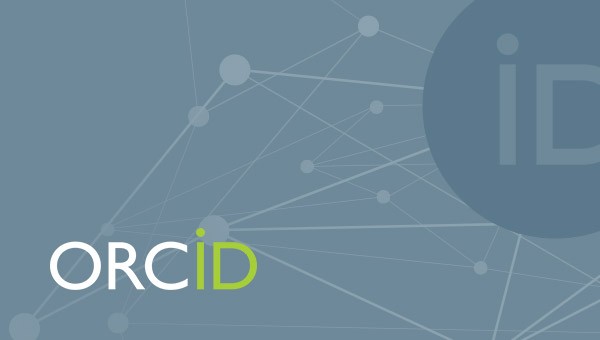Validity and Practicality of Newton's Law Interactive E-Worksheet with The Assistance of Liveworksheets
DOI:
10.29303/jpft.v11i1.7992Published:
2025-05-13Issue:
Vol. 11 No. 1 (2025): January-JuneKeywords:
e-worksheet, Interactive, Newton’s Law, Validity, PracticalityArticles
Downloads
How to Cite
Downloads
Metrics
Abstract
The demand for independent learning, both at home and in school, highlights the importance of providing instructional materials in the form of interactive student worksheets (e-Worksheets) to support continuous scientific learning activities. This study aims to develop an interactive electronic worksheet (e-Worksheets) utilizing the Liveworksheets platform, specifically designed for high school students studying Newton’s Laws, and to evaluate its validity and practicality. The research employed the Alessi and Trollip development model, which consists of three phases: planning, design, and development. Content validity was assessed through expert judgment using Aiken’s V, while practicality was measured using student response questionnaires. The research subjects were students from Class XF at Senior High School 1 Muara Padang. Data analysis results indicated that the developed interactive e-Worksheets is both valid and practical, with a validity score of 95.3% and a practicality score of 83.8%. These results categorize the e-Worksheets as highly valid and highly practical, making it suitable for classroom implementation. However, this study only addresses the validity and practicality aspects and does not assess the effect of the e-Worksheets on students’ learning outcomes.
References
Azzahra, M., & Kowiyah, K. (2022). The differences between using Quizizz interactive quiz and LiveWorksheet in math problem solving ability. Jurnal Penelitian dan Pengembangan Pendidikan, 6(2), 321–328. DOI: https://doi.org/10.23887/jppp.v6i2.48883
Bates, A. W., & Poole, G. (2005). Effective teaching with technology in higher education: Foundations for success (Jossey-Bass Higher and Adult Education). Jossey-Bass. http://www.amazon.com/Effective-Teaching-Technology-Higher-Education/dp/0787960349
Djamas, D., & Tinedi, V. (2021). Development of interactive multimedia learning materials for improving critical thinking skills. In Research anthology on developing critical thinking skills in students (pp. 507–525). IGI Global. DOI: https://doi.org/10.4018/978-1-7998-3022-1.ch026
Ekici, E. (2016). “Why do I slog through the physics?” Understanding high school students’ difficulties in learning physics. Journal of Education and Practice, 7(7), 95–107.
Erinosho, S. Y. (2013). How do students perceive the difficulty of physics in secondary school? An exploratory study in Nigeria. International Journal for Cross-Disciplinary Subjects in Education, 3(3), 1510–1515. DOI: https://doi.org/10.20533/ijcdse.2042.6364.2013.0212
Evans, R., & Cleghorn, A. (2022). Do student teachers see what learners see?–Avoiding instructional dissonance when designing worksheets. South African Journal of Childhood Education, 12(1), 1015. DOI: https://doi.org/10.4102/sajce.v12i1.1015
Faaiqoh, N., & Ratnaningrum, I. (2024). Implementation of a puzzle educational game based on Liveworksheet in learning science through the PAIKEM method for class VI. Jurnal Penelitian Pendidikan IPA, 10(11), 8352–8358. DOI: https://doi.org/10.29303/jppipa.v10i11.8649
Fauzi, A., Rahmatih, A. N., Indraswati, D., & Sobri, M. (2021). Penggunaan situs Liveworksheets untuk mengembangkan LKPD interaktif di sekolah dasar. Mitra Mahajana: Jurnal Pengabdian Masyarakat, 2(3), 232–240. DOI: https://doi.org/10.37478/mahajana.v2i3.1277
Febryanti, N. P., & Rusmini, R. (2022). E-LKPD assisted with Liveworksheets to improve students’ critical thinking skills on material shifting direction of equilibrium. Edukatif: Jurnal Ilmu Pendidikan, 4(4), 5934–5942. DOI: https://doi.org/10.31004/edukatif.v4i4.3474
Ghaisani, N. R. T., & Setyasto, N. (2023). Development of Liveworksheets-based electronic student worksheets (E-LKPD) to improve science learning outcomes. Jurnal Penelitian Pendidikan IPA, 9(8), 6147–6156. DOI: https://doi.org/10.29303/jppipa.v9i8.4571
Ladamay, I., Kumala, F. N., Susanti, R. H., Ulfatin, N., Wiyono, B. B., & Rahayu, S. (2021). Designing and analyzing electronic student worksheets based on the Kvisoft Flip Book Maker for elementary school students. IOP Conference Series: Materials Science and Engineering, 1098(3), 032028. https://doi.org/10.1088/1757-899X/1098/3/032028 DOI: https://doi.org/10.1088/1757-899X/1098/3/032028
Lord, T., Lee, H. S., Horwitz, P., Pryputniewicz, S., & Pallant, A. (2024). A Remote view into the classroom: analyzing teacher use of digitally enhanced educative curriculum materials in support of student learning. Journal of Science Teacher Education, 35(2), 127-152. DOI: https://doi.org/10.1080/1046560X.2023.2204591
Meilina, S., & Andriani, A. (2023). Implementation of TPACK-based Liveworksheet Approach on Students' Learning Motivation and Critical Thinking in Science Learning at Elementary School. In Proceedings of the 2nd International Conference on Social Sciences, ICONESS (pp. 22-23). DOI: https://doi.org/10.4108/eai.22-7-2023.2335408
Nirmayani, L. H. (2022). Kegunaan aplikasi Liveworksheet sebagai LKPD interaktif bagi guru-guru SD di masa pembelajaran daring pandemi COVID-19. Edukasi: Jurnal Pendidikan Dasar, 3(1), 9. DOI: https://doi.org/10.55115/edukasi.v3i1.2295
Pee, B., Woodman, T., Fry, H., & Davenport, E. S. (2002). Appraising and assessing reflection in students’ writing on a structured worksheet. Medical Education, 36(6), 575–585. DOI: https://doi.org/10.1046/j.1365-2923.2002.01227.x
Safitri, R. (2020). Pengembangan lembar kerja peserta didik (LKPD) fisika berbasis STEM (Sains, Technology, Engineering, Mathematics) pada materi hukum gravitasi Newton dan usaha energi kelas X SMA/MA.
Ryabchikova, V. G., Rubleva, O. S., Sergeeva, N. A., & Yakovleva, N. A. (2020). Using interactive worksheets when teaching foreign languages by the "flipped class" technology. Perspectives of Science and Education, 45(3). DOI: https://doi.org/10.32744/pse.2020.3.15
Sa’adah, S., Andini, F. S., & Yusup, I. R. (2023). Improving students’ science process skills through level of inquiry learning assisted by Liveworksheet on the concept of environment change. Jurnal Penelitian Pendidikan IPA, 10(7), 3983–3991. DOI: https://doi.org/10.29303/jppipa.v10i7.8120
Salam, A. U. A., Komarayanti, S., & Warsita, K. S. (2023). The use of website-based PBL model to improve the interest and motivation in learning class X students. International Social Science and Humanities, 2(2), 479–483. DOI: https://doi.org/10.32528/issh.v2i2.253
Sanu, I. I. (2021). The relevancy of materials in the digital students’ Liveworksheets for seventh graders of junior high school. (Doctoral dissertation, Universitas Negeri Jakarta)
Sumanik, N. B., Siregar, L. F., Pasaribu, Y. P., & Buyang, Y. (2023). Literature study: Liveworksheet as a science learning media electronic student worksheet in the Merdeka Curriculum. Technium Social Sciences Journal, 49(1), 374–382. DOI: https://doi.org/10.47577/tssj.v49i1.9828
Sung, Y. T., Chang, K. E., Hou, H. T., & Chen, P. F. (2010). Designing an electronic guidebook for learning engagement in a museum of history. Computers in Human Behavior, 26(1), 74–83. https://doi.org/10.1016/j.chb.2009.08.004 DOI: https://doi.org/10.1016/j.chb.2009.08.004
Susilawati, E., Taufiq, A. U., & Hasanah, U. (2023). Development of Liveworksheet-based interactive LKPD on the biodiversity material of Class X. Bio-Inoved: Jurnal Biologi dan Pendidikan Biologi, 5(1), 17. DOI: https://doi.org/10.20527/bino.v5i1.14719
Syahrul Kahar, M., Suardi Wekke, I., & Layn, M. R. (2018). Development of problem solving-oriented worksheet of physics learning in senior high school. Jurnal Ilmiah Pendidikan Fisika Al-Biruni, 7(2), 79–90. https://doi.org/10.24042/jipfalbiruni.v7i2.2802 DOI: https://doi.org/10.24042/jipfalbiruni.v7i2.2802
Taherdoost, H. (2016). Validity and reliability of the research instrument; how to test the validation of a questionnaire/survey in a research. International Journal of Academic Research in Management (IJARM), 5. DOI: https://doi.org/10.2139/ssrn.3205040
Widianti, D., Sopyan, A., Rahman, A., & Hidayat, W. (2024). Development of Liveworksheets-assisted teaching materials using a problem-based learning model on student’s learning outcomes. Mathline: Jurnal Matematika dan Pendidikan Matematika, 9(2), 591–604. DOI: https://doi.org/10.31943/mathline.v9i2.513
Yusuf, F., & Ali, A. (2022). Exploring students’ perception on using Liveworksheet as self-directed learning of listening skills in online education. Utamax: Journal of Ultimate Research and Trends in Education, 4(3), 255–266. DOI: https://doi.org/10.31849/utamax.v4i3.11449
Author Biographies
Sardianto Markos Siahaan, Sriwijaya University
Physics Education Study Program
Wawan Ahmad Komarudin, Sriwijaya University
Physics Education Study Program
License
Copyright (c) 2025 Sardianto Markos Siahaan, Wawan Ahmad Komarudin

This work is licensed under a Creative Commons Attribution-ShareAlike 4.0 International License.
Authors who publish with Jurnal Pendidikan Fisika dan Teknologi (JPFT) agree to the following terms:
- Authors retain copyright and grant the journal right of first publication with the work simultaneously licensed under a Creative Commons Attribution License 4.0 International License (CC-BY-SA License). This license allows authors to use all articles, data sets, graphics, and appendices in data mining applications, search engines, web sites, blogs, and other platforms by providing an appropriate reference. The journal allows the author(s) to hold the copyright without restrictions and will retain publishing rights without restrictions.
- Authors are able to enter into separate, additional contractual arrangements for the non-exclusive distribution of the journal's published version of the work (e.g., post it to an institutional repository or publish it in a book), with an acknowledgement of its initial publication in Jurnal Pendidikan Fisika dan Teknologi (JPFT).
- Authors are permitted and encouraged to post their work online (e.g., in institutional repositories or on their website) prior to and during the submission process, as it can lead to productive exchanges, as well as earlier and greater citation of published work (See The Effect of Open Access).










